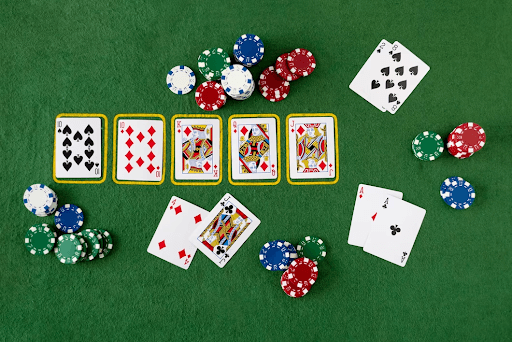Are you looking to up your game in Texas Holdem Poker? If so, this guide is for you! In it, we will discuss the practical approach to advanced play and how to use position, pot odds, and probability to make smart decisions. You’ll learn strategies for betting and bluffing as well as how to study other players to identify patterns in their play. With practice and dedication, you can become an expert poker player who knows exactly when the odds are in your favor.
Utilize Position, Pot Odds, and Probability to Make Smart Decisions
Position refers to where you are located around the poker table relative to other players. The earlier or closer your position is to the dealer button (the marker on the table that indicates which player gets to act first), the more advantageous it is for you since you will have the opportunity to see what other players do before making your move.
There are three main types of positions: early, middle, and late. Knowing which type of position you are in can help inform strategic decisions such as what hands you should choose to play with or how much money you should commit when betting or raising.
Pot odds refer to how much money is in the pot relative to what amount of money it would cost a player to stay in the hand until showdown (the end of a round when all remaining players reveal their cards).
Let’s say there’s $50 in a pot and it would cost $10 for a player to stay in that hand until showdown; this means that there are 5-to-1 pot odds ($50/$10). If a player knows their pot odds, they can assess whether they should stay in a hand or fold based on how likely they think they are to win those pot odds given their current hand strength.
Probability is also an important concept when playing Texas Holdem Poker. To turn any kind of profit while playing poker, players must be able to assess not only their hand strength but also how likely it is that their opponents have stronger hands than them. By calculating probability, players can determine if calling or folding will give them a better-expected value (EV), meaning the amount of money expected on average each time after factoring in all possible outcomes from staying in that hand.
Knowing one’s chances of winning can help make more informed decisions regarding whether they should continue with weaker hands or fold stronger hands that may be up against better opponents’ holdings

Develop Advanced Strategies for Betting and Bluffing
A successful strategy for betting and bluffing involves knowing when it is the right time to bet, check, raise, or fold. Good players use various techniques to gain information about their opponents’ hands, such as reading body language, studying wagering habits, and making educated guesses about which cards have been dealt. These clues can then be used to determine whether betting or bluffing is appropriate.
In addition to learning how to properly identify the strength of another player’s hand, it can be beneficial for players to practice different betting styles. While aggressive play can sometimes win large pots with big bets and raises, slow play also has its advantages as it allows opponents who are chasing weaker hands too far instead of folding early on. It is important to understand which approach works best in particular situations so players can maximize their bankroll.
Players should also learn to detect when other people are attempting a bluff so they don’t fall into their trap. For example, if someone has been playing passively throughout the game but suddenly makes an abnormally large bet on one hand, this may be an indication that they are attempting a bluff to trick other players into folding even if they have a strong hand. Being able to spot these attempts quickly will help prevent losses.
Study Other Players to Identify Patterns in Play
When observing how players act during a game, it’s important to look for both subtle and obvious patterns in their behavior. This could include noting if a certain kind of starting hand is being played frequently or if one opponent always bets aggressively after seeing the flop.
Once these patterns are established, it is then possible to plan your moves more effectively. For example, if you know that an opponent plays tight pre-flop but likes to bluff on the river, you can use this knowledge to either call his bet or fold, depending on the strength of your holdings.
It’s also important to pay attention to how different players react in similar circumstances. For instance, if two opponents have made aggressive bets before the river card is revealed, one may choose to stay in while the other will fold – providing valuable information about what type of hands they are holding and how they will likely act in future hands.
Paying close attention to multiple opponents at once will allow you to build up a nuanced understanding of their playing styles over time – giving you an edge when it comes time for a showdown.

Takeaways
Texas Holdem Poker is a complex game that requires skill to master. By understanding the basics of poker, such as position, pot odds, and probability; along with developing advanced strategies for betting and bluffing; and studying other players to identify patterns in play; it is possible to become an expert poker player who knows exactly when the odds are in their favor.
To further hone your poker skills, sign up today at the world’s largest poker room, GG Poker! GGPoker is one of the best virtual platforms available to play Texas Holdem poker online and aid in creating your personal texas holdem cheat sheet.











